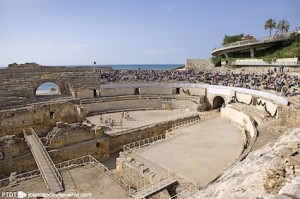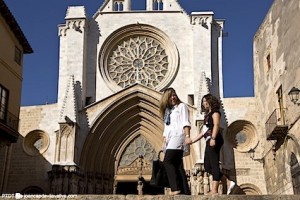The Costa Daurada has a wealth of cultural heritage, thanks to the passing of many different civilisations over the centuries. A visit here gives your clients the opportunity to journey back in time. 
The Font Major Caves of L’Espluga de Francolí show us how prehistoric man lived and in the Iberian Citadel of Calafell we can experience what it was like to be an early Iberian. The monuments of Tarragona and its surrounding area take us back to the time when the Roman city of Tarraco (Tarraco is the ancient name of the current city of Tarragona) was the capital of the largest colony on the Iberian Peninsula.
In mediaeval times, Montblanc was the most important royal fortress in the area. The monasteries that make up the Cistercian Route, also from the Middle Ages, reflect the architecture and life of a society dedicated to religious worship. Nearer our own time, the Modernist buildings of Reus are considered to be some of the best examples of this late 19th and early 20th century style of architecture.
The past of Tarraco, Rome’s first and oldest settlement on the Iberian Peninsula, is still alive today. The monumental legacy left to us by the Romans is so extensive that it is almost as if Tarraco were still here. It was founded during the Second Punic War with a Roman military encampment. Later, in Julius Caesar’s time, it became one of the most important cities on the Mediterranean. In the year 2000 the Roman monuments of Tarragona, the Arch of Berà and the villas of Centcelles and Els Munts, were declared a UNESCO World Heritage Site. Today Tarragona has the most important collection of Roman monuments in the world after Rome.
The monasteries of Poblet and Santes Creus were built in the 12th century with the purpose of promoting the re-population of the territories recently re-conquered from the Muslims. Both institutions belong to the Cistercian order, which is characterised by remaining faithful to its vow of poverty. For this reason, the austerity of Romanesque architecture is the predominant style of the Cistercian monasteries, although we can also find hints of Gothic. The third building on the Cistercian Route is the nunnery of Vallbona de les Monges (Lleida).
The Modernist movement bequeathed a rich heritage to Costa Daurada and, in particular, the city of Reus. There, one can take a walking tour that turns the city into a turn-of-the-century wonderland, brimming with Modernist buildings designed by the major architects of the era. One can also partake of an incredible experience at the Gaudí Centre. Tarragona, too, is home to Modernist gems, such as the Metropol Theatre, the altar at the Jesús i Maria Church and the mausoleum of James I of Aragon, or King Jaume I.
Likewise, the counties of Terra Alta, El Priorat, L’Alt Camp and La Conca de Barberà are home to several breathtaking Modernist winery co-operatives, popularly known as wine cathedrals. Finally, visitors can also take in the church in Vistabella and the Gaudí House in Riudoms.
For more information:
Costa Daurada:





